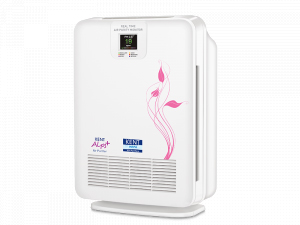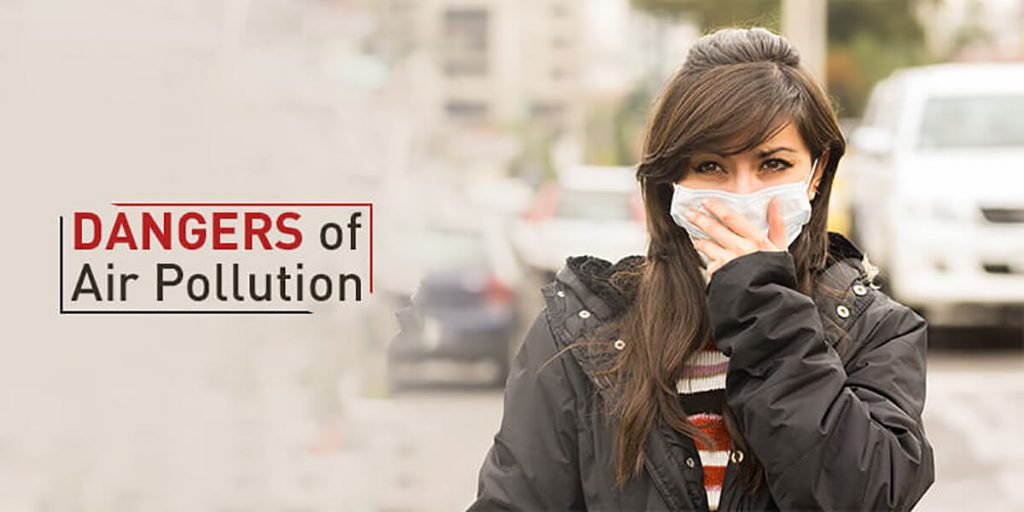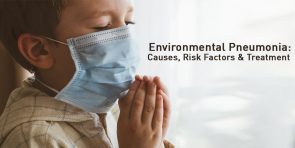What will Happen if the Level of Air Pollution Continues to Increase?
What is Air Pollution and Its Effects
Air pollution is one of the biggest killers all over the world. In fact, air pollution in India caused approximately 1.2 million deaths in 2017. A survey published by Lancet Planetary Health concluded that unusually high rates of lower respiratory infections, heart diseases, stroke, diabetes, and lung cancer caused one in eight deaths. The situation is so alarming that no Indian state achieves the air quality limits mentioned by WHO. Not just outdoor, the poor condition also affects the indoor air quality. The presence of PM 2.5 and carbon dioxide build-up as a result of outdoor pollution can have a negative impact on your health. This is the reason why it is extremely important to take steps to curb the situation. Read on to find out the dangers of air pollution and future predictions on the effects of not controlling indoor and outdoor air pollution.
Catastrophic Impact of Air Pollution in the Future
The impact of increasing air pollution is more dangerous than you think. If air pollution is not controlled, by 2030 the air will become so poisonous that it will be necessary to use an oxygen kit to breathe easily. Rising air pollution will also lead to premature aging. Human exposure to air toxins will increase to a great extent if air pollution is not controlled. The Environmental Protection Agency states that exposure to pollutants is directly linked to cancer and heart disease.
Indoor Air Quality- Is it as Important as Outdoor Air Quality?
The indoor and outdoor air quality is closely related to each other. The outdoor pollutants penetrate the indoor air with the background air when you ventilate your home. If the concentration of indoor air pollutants is already high, it can further deteriorate the outdoor air quality. The situation is more alarming in cities such as Delhi, which according to reports, has the World’s second-highest level of particulate matter. Numerous indoor air pollutants such as volatile organic compounds, formaldehyde, radon, asbestos, and biological allergens have 1000 times higher chances of reaching human lungs as compared to indoor air pollutants.
Also Read: World Environment Day 2019 – Tips to Beat Air Pollution
Consequences of Air Pollution
Air pollution has been a worldwide problem, which makes it important to know the possible consequences of uncontrolled pollution. Global warming is one of the serious concerns of all environmentalists. Global warming or the greenhouse effect is one of the reasons why the climate is warming up. As predicted by the Inter-Governmental Panel on Climate Change (IPCC), there will be an increase in the average temperature of 1 degree Celsius by 2025 and 3 degrees Celsius by the end of the 21st Century.
An increase in greenhouse gases (small amounts of water vapour, carbon dioxide, methane, nitrous oxide, and ozone) have increased as a result of rising population and industrialization. The stratospheric ozone layer, which filters out harmful ultraviolet rays, has depleted, thereby increasing the risk of skin cancer, eye cataracts. The depletion of the ozone layer also affects the immune system and harms the aquatic system and crops.
Some of the harmful consequences of air pollution are:
- Prevents photosynthesis, which affects the air quality
- Acid rain,
- Depletion of the ozone layer
- Global Warming
- Cardiovascular diseases
- Allergies
- Asthma Attacks
- Bronchitis among kids
- Slow pulmonary development
Which are the common pollutants present in the air?
With the rapid increase in air pollution, health risks have increased too. Air pollution can be both visible and invisible.
The Environmental Protection Agency (EPA) has reissued certain guidelines for air pollution and has identified the below stated common pollutants present in the air:
- Particle Pollution and Ground level-ozone pollution: Research reveals that exposure to particle pollution, also known as particulate matter (PM5) can cause cardiovascular problems and can lead to premature death. And ground level-ozone pollution increases the risk of lung diseases. Hence, both combined can result in major environmental and health hazards.
- An unhealthy level of sulphur dioxide and nitrogen dioxide: Peak level of NO2 and SO2 are proven to be hazardous for human health. During rush hour Nitrogen dioxide levels can be as high as 200 ppb (400 µgm-3) and 600 ppb (1200 µgm-3) respectively. Even sulphur dioxide levels can reach up to 400-750 ppb (1000-2000 µgm-3) during rush hours.
- Airborne lead pollution: Airborne lead pollution results in hazardous effects specifically in children. They can face behavioural problems, lower IQs and even learning disability, and various other neurological problems.
- Carbon Monoxide: Exposure to high levels of carbon monoxide can lead to various health hazards. The exposure to carbon monoxide should be 50 PPM or less. But if the level reaches 101 PPM or more then things can turn ugly.
Is Indoor Air Pollution More Dangerous than Outdoor Pollution?
The indoor air is 10 times more polluted than the outdoor air. Indoor air pollutants are even more damaging than outdoor pollutants. The reason is constrained areas provide a more favorable environment for pollutant build-up as compared to the outdoor areas. Many people are unaware of the fact that effect of indoor air pollution makes you look older as it has a detrimental effect on your skin. Prolonged exposure to indoor air pollutants weakens the immune system, impairs your lungs, and also makes them more susceptible to infection and diseases.
Read More: Most Common Diseases Caused by Indoor Air Pollution
How to Control Indoor/Outdoor Air pollution?
The level of air pollution has reached such an extent that controlling pollution will be a slow process. This is the reason why you need to take small steps to control both indoor and outdoor air pollution.
Way to control indoor air pollution
- Use energy-efficient light bulbs
- Use energy-efficient appliances
- Turn off lights, computers, and appliances
- Use a HEPA air purifier
- Avoid smoking inside
- Minimize the use of candles, room fresheners
Ways to Control Outdoor Pollution
- Keep your cars well-tuned and maintained
- Avoid burning fossil fuel
- Opt for public transportation or carpool
- Avoid burning trash or leaves
- Recycle products
How can we protect our health from air pollution?
An ‘alarming’ 7 million people around the world die every year as a result of air pollution. Not just outdoor, but also indoor air pollution affects health and well-being. The alarming statistics makes it necessary to take the right steps- to stay safe from both indoor and outdoor air pollution. Wearing N95/99 masks, restricting outdoor activities for kids, detoxifying your body can help you stay protected from outdoor pollution.

When it comes to indoor air pollution, installing a HEPA air purifier can go a long way in protecting you from the ill-effects of indoor air pollution. KENT provides a range of HEPA air purifiers, which are efficient in removing indoor air pollutants such as PM 2.5, dust particles and carcinogen agents so that you breathe safely. Visit the KENT website to know more about our range of HEPA air purifiers.






It source was quite helpful
Dear Sir/Madam,
Thank you, for your kind appreciation. Keep reading KENT Blog for more motivation on staying healthy!
Regards,
Team Kent
I’m still learning from you, but I’m improving
myself. I absolutely love reading all that is posted on your site.Keep the posts coming.
I enjoyed it!
What’s up, yup this post is genuinely pleasant and I
have learned lot of things from it on the topic of blogging.
thanks.
Hello there, just became alert to your blog through Google, and found that
it is truly informative. I’m gonna watch out for brussels.
I’ll be grateful if you continue this in future.
Lots of people will be benefited from your writing. Cheers!
Definitely, what a magnificent website and revealing posts, I definitely will bookmark your site.All the Best!
Good day! I could have sworn I’ve been to
this site before but after reading through some of the post
I realized it’s new to me. Nonetheless, I’m definitely glad I found it and
I’ll be book-marking and checking back frequently!
Thanks for ones marvelous posting! I actually
enjoyed reading it, you’re a great author.I will remember to bookmark
your blog and will often come back later in life. I want to encourage yourself to continue your great work, have a nice holiday
weekend!
Hi, your appreciation means a lot to us. Wishing you a great day ahead. Regards, Team Kent
Pretty nice post. I just stumbled upon your blog
and wished to say that I have truly enjoyed surfing around your blog
posts. After all I’ll be subscribing to your rss
feed and I hope you write again very soon!